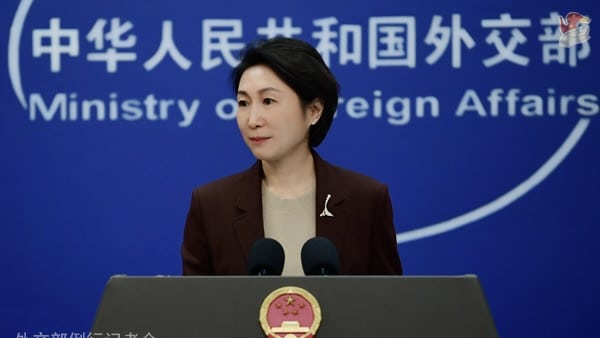China reiterated its concerns about the Philippines’ plan to acquire the U.S. Typhon missile defense system. In the foreign ministry press briefing on Thursday, December 26, the spokesperson of the ministry, Mao Ning, claimed it is a “strategic and offensive” weapon which may fuel arms race in the region. China also restated its long-standing demand for the withdrawal of the system already deployed near its borders.
Ning reminded the leadership in the Philippines of their promise of never taking sides among the major powers. She accused the Philippines of working “with the U.S. to bring in the Typhon system” and “placing its national security and defense in the hands of others, introducing geopolitical confrontation and risk of arms race into the region and posing a threat to regional peace and security.”
Mao Ning questioned the move, asking “whose interest does this move serve? How could anybody believe this in independent foreign policy?” She asserted that “what the Philippines is doing benefits no one.”
Dismissing concerns raised by China earlier, Philippines Defense Minister Gilberto Teodoro had said on Tuesday, that “any deployment and procurement of assets related to the Philippines security and defense falls within its own sovereign prerogative and are not subject to any foreign veto,” Reuters had reported.
Philippines Military Chief Lieutenant General Roy Galido even said on Monday that his country would acquire the Typhon mid range missile system from the U.S. “for the interest of protecting our sovereignty,” in the coming year.
The U.S. deployed the Typhon missile system in the Philippines in April this year despite objections raised by China. Both the U.S. and Philippines had claimed that the deployment of the missile system was temporary for the purposes of a joint Balikatan military exercises and once the exercise is over it would be pulled out by June. However, the missile system has not been removed yet and both U.S. and Filipino officials have since claimed no third country has any say in the matter.
U.S. weapons mean risk of war and conflict
Typhon is a missile system developed by Lockheed Martin and was adopted by the U.S. army last year. It can carry both conventional and nuclear warheads up to 480 KM.
China has repeatedly asked for the removal of the U.S. missile systems in the region with its defense ministry claiming earlier this month that “history and reality have proven that wherever U.S. weapons are deployed, the risk of war and conflict will rise, and the local people will suffer undeserved suffering from war.”
Galido has confirmed that negotiations are underway with the U.S. to acquire Typhon. When acquired it would be deployed to defend Philippines’ maritime borders and its “floating assets” of up to 200 nautical miles (370.4 KM), South China Morning Post reported.
At present, China and the Philippines have a dispute over some islands in the South China Sea. The military cooperation between the U.S. and the Philippines has grown significantly since 2022 under the leadership of Filipino President Marcos Junior. The U.S. has been trying to increase its presence in the region in the name of “freedom of navigation” targeting Chinese interests. There have been increased numbers of military exercises and tensions among the countries of the region since the growing U.S. involvement.
Reiterating its stand on external interference in the region, Chinese Foreign Ministry Spokesperson Ning had said in a press briefing on Monday that “by bringing in this strategic offensive weapon, [Philippines] is enabling a country outside the region to fuel tensions and antagonism in this region and incite geopolitical confrontation and arms race.”
China had earlier appealed to the government of the Philippines to “heed the call from regional countries and their peoples, correct its wrongdoing as soon as possible, quickly pull out the Typhon Missile system as publicly pledged, and stop going further down the wrong path.”

